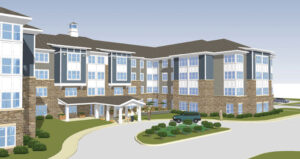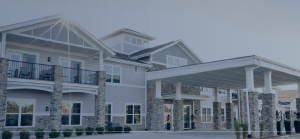If there were one phrase to summarize the attitude of seniors housing investors and lenders in 2022, it would be “cautiously optimistic.” How quickly can the seniors housing industry hope to recover in the face of continued difficulties? What is likely to drive the financing and investment market?
While difficulties due to COVID and labor shortages continue to create challenges in terms of immediate occupancy, strong demand fundamentals and a healthy appetite for seniors housing investments indicate a return to normality is possible in 2022, according to Brandon Taseff, senior vice president, and Lee Delaveris, vice president on KeyBank Real Estate Capital’s team
Headwinds, Tailwinds in Seniors Housing
The headwinds for seniors housing investment and development should not be dismissed, Taseff indicates. Staffing issues, the Omicron variant, slow occupancy growth and sluggish absorption of senior living units have made for slow going in the market with acquisition, development and financing activity remaining below normal levels.
2021 saw many positive factors to counter these impediments: widespread vaccination, a rebound in occupancy and a strengthened capital market interest in seniors housing. 2022 may be able to continue this momentum, explains Delaveris.
“There are a lot of good reasons to think the industry will continue to rebuild this year,” he continues. “Capital sources are starting to normalize as they understand how to manage through the risks of COVID.”
Taseff also mentions that COVID has reduced the amount of development in the space. There was overbuilding in a number of markets going into COVID, resulting in extended lease-up times and general underperformance. “COVID effectively put a 12- to 18-month stop on all new construction in the space. The lack of new inventory that would have come online this year will help increase occupancy for existing properties.”
Interest Rates Create a Sense of Urgency
As inflation in the economy becomes more prevalent and interest rates move upwards, KeyBank has seen determination on the part of clients when it comes to refinancing or placing new debt. Delaveris says he has heard from clients who are anxious to lock in permanent financing in 2022 due to the expectation of rising rates. “Borrowers should have a sense of urgency,” he says.
He notes particularly the financing activity through the U.S. Department of Housing and Urban Development (HUD). HUD has remained active through the pandemic, Delaveris explains, closing $3.9 billion of loans in fiscal year 2021. “But they saw the types of transactions change. Their volume shifted to more refinances of existing HUD-financed properties, and there were fewer new properties that came into HUD’s program in the fiscal year ending 2021.” Delaveris notes that while low interest rates drove the demand for refinances of existing HUD loans, operational challenges likely slowed the inflow of new properties to the program in 2021.
Property Performance and Stabilization Drive Activity
Property performance also slowed financing activity with Fannie Mae and Freddie Mac, Delaveris notes. “Fannie and Freddie had abnormally low levels of production in 2021,” Delaveris continues. “Their programs are available for stabilized deals, but there just have not been many of those recently.” Delaveris notes that both agencies received increases to their volume caps for 2022, from $70 billion to $78 billion.
While interest rates are rising early in 2022, Delaveris indicates that is not the biggest factor he sees affecting the market.
“I think the biggest driver of finance activity in 2022 will be property performance and the stabilization of the market. Interest rates may be coming off their historical lows in 2022, but capital will still be available and relatively attractive.”
Bridge Loans Needed
With many properties not yet eligible for permanent financing, the need for bridge loans is clear. “KeyBank has historically been a bridge lender, especially for project level and portfolio financing for senior living and skilled nursing,” Taseff explains.
“That capital has always been needed; there’s always been some percentage of the market that is not stabilized or that is not ready for permanent financing yet,” he continues. “What’s interesting now is the majority of the market is, technically, not stabilized. Now there’s an overwhelming need for bridge loan capital from the bank community.”
“We’ve seen our activity really explode in terms of bridge financing, particularly portfolio financings that need seasoning. We recently closed a joint venture with Welltower, the largest investor in the senior housing space, to provide bridge capital,” explains Taseff of the $750 million dollar unitranche program. “In short, the unitranche is a combination of a junior and a senior lien in one single note, providing a seamless execution for borrowers needing bridge financing. It serves as an interim piece of capital that provides our senior housing owners and operators with the time to stabilize their properties and refinance them in the permanent market.”
Taseff expects that KeyBank will be deploying this sort of financing (as well as the company’s balance sheet lending) fairly quickly over the next few years, given the appetite in the market.






